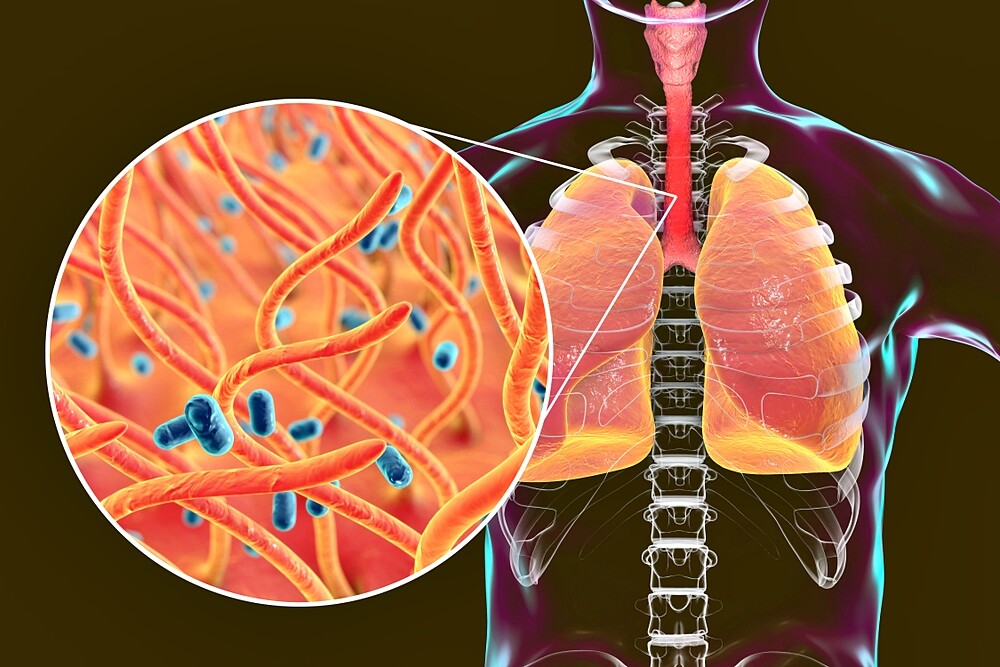Pertussis (whooping cough) is a highly contagious infectious disease caused by bacteria. We explain how to get infected and what helps.
What is whooping cough?
Whooping cough (pertussis) is considered highly infectious and is one of the most common respiratory diseases. Pertussis is caused by bacteria (Bordetella pertussis), which produce certain toxins that attack the mucous membranes of the respiratory tract. As a result, the patient mainly has convulsive coughing attacks that can lead to respiratory distress.
Whooping cough is considered a typical childhood disease – however, there is a vaccination against it, which the majority of children in Germany have also received. This is why pertussis is more common among teenagers and adults today. This applies not only to those who have never been vaccinated, but also to those whose vaccination protection for whooping cough has expired – it only lasts for a few years. Therefore, adults should also regularly check their vaccination card.
Careful, whooping cough is contagious!
Anyone who has not been vaccinated can easily be infected by a sick person by coughing, sneezing or even breathing air. Infants, seniors and people with an immune deficiency are more at risk than healthy adults. For babies who cannot yet be vaccinated, whooping cough can be life-threatening – most of them have to be treated in hospital for pertussis. Infants can become infected on their first day of life because they have no antibodies against the infection.
How long is pertussis contagious?
It usually takes seven to ten days, but sometimes up to three weeks, before the first symptoms of whooping cough appear. From this moment on, the affected person is considered contagious – and remains so for about three weeks, with infants excreting the bacteria even longer. The administration of an antibiotic reduces the possible infection time to about five days after the start of treatment.
By the way the pathogens of whooping cough can temporarily colonize vaccinated people. The disease does not break out in them, but the bacteria could be passed on to others by this person.
What are the symptoms of whooping cough?
The following symptoms occur with whooping cough:
- Typical cold complaints like colds, fever, fatigue
- Cramp-like coughing attacks, especially at night, also coughing with sputum
- Choking and vomiting
- Insomnia
- Loss of appetite
- Respiratory problems, in infants up to respiratory arrest
In young people the cough persists for a very long time, but the typical coughing attacks do not occur. Therefore, whooping cough is not always easy to diagnose, even for a doctor. In general, however, a doctor should always be consulted if whooping cough is suspected!
Treatment of pertussis
Since bacteria trigger whooping cough, prompt treatment with antibiotics is advisable. However, other drugs can also be used. Cough syrup has only a limited effect on pertussis – but cough suppressants can be used to try to liquefy the mucus that is very viscous in pertussis so that it can be coughed up more easily. In addition, further measures are useful for pertussis:
- Drink a lot, at least two litres a day, better three (water, but also herbal tea).
- Since those affected often suffer from vomiting, it is advisable to give them more mushy foods. It is best to eat several small meals spread over the day.
- The patient should take it easy, but short walks in the fresh air can help with irritated coughs.
- Inhalations with sea salt or chamomile also soothe the irritation of the throat.
- During the coughing attack, the patient should sit upright with his head slightly bent, this makes breathing easier.
With whooping cough other people must be protected
If whooping cough is suspected or an existing illness is suspected, attendance at communal facilities such as kindergartens or schools is prohibited. Only after antibiotic therapy for a period of at least five days can the facilities be re-entered.

